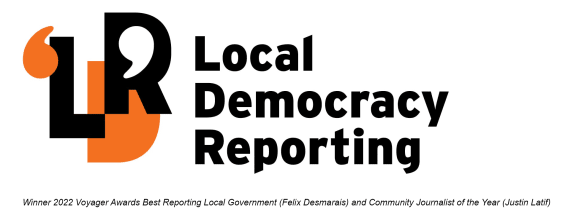
The Waiho south bank settlement of Waiho Flat has about 80 residents and has been extensively developed for farming since the late 19th century but they will have to give up their land under the proposal to remove the southern stopbanks. Photo: Greymouth Star / Brendon McMahon
Evacuation plans for residents and visitors along the Waiho (Waiau) River at Franz Josef have been questioned by the Mayor of Westland.
The popular Franz Josef Glacier visitor hotspot is at risk of catastrophic flooding if the river stopbanks fail due to increasing sedimentation in the riverbed.
It is a key focus of a proposed plan to abandon the Waiho Flat farming district on the south bank under a new 10-year strategy released by the West Coast Regional Council last month.

However, Westland Mayor Helen Lash has called for "an improved evacuation plan" within the strategy for Waiho Flat residents if the stopbanks fail.
The area is home to about 40 residential, lifestyle and commercial properties and about 80 residents.
It also has the airport servicing the Franz Josef tourist economy, and a mix of five large dairy and grazing properties.
Under the revised 10-year Waiho River strategy, released on 10 October, Waiho Flat would be progressively abandoned, beginning in about five years.
At the West Coast Emergency Management Joint Committee on 8 November, Lash questioned whether the evacuation plan for flooding would be sufficient in the meantime.
Concerned residents believed "an improved evacuation plan" was needed for the south side, she said.
The south side should be prioritised "given the danger" of flooding, Lash said.
However, West Coast Emergency Management group manager Claire Brown said the strategy focused on the southern bank area, but also "on the entirety of the community".

The medium-term future of the South Westland tourist hotspot of Franz Josef will be secured under a proposal to let the southern stopbanks go on the Waiho River. Photo: Greymouth Star / Brendon McMahon
They were focusing on various parts of the Franz Josef area, on both sides of the river, around the critical risk to life, Brown said.
"We're not excluding the south side at all," she said.
"The planning we need to do has to be specific to each of the areas around the community," she said.
Regional council chief executive Darryl Lew echoed his warning when the strategy was presented to the community last month.
"This is the country's new Esk Valley - this is probably the most dangerous flood plain in the country right now," he said on 10 October.
On Wednesday, he said the stopbanks on both sides protecting the population already had weaknesses.
"At the end of the day there are frailties in the banks on both sides."
However, priority was given to the south side due to the risk.

The Scenic Hotel Group's Mueller Wing hotel complex under flood after the Waiho River swept over the nearby stop bank in April 2016, during a 'moderate' flood. Photo: Greymouth Star / Brendon McMahon
"Enhanced civil defence arrangements need to be done very quickly, now."
This included identifying residents with the experience "to have eyes on those banks" to understand the triggers during a serious flood event.
Lew said this was about understanding "scour and collapse" signs and then raising the alarm.
Relying on rain gauges was not going to cut it and the approach needed to be integrated across the whole area.
"There's absolute frailties on the north side as well. It's not about south versus north," he said.
Regional council chairman Peter Haddock said 95 percent of people in the area - including visitors - were ordinarily concentrated on the Franz Josef side of the river.
"Both sides could be at risk but for a flooding event - which will be an extreme event - there needs to be different approaches."
Committee chair, Westport Mayor Jamie Cleine, said evacuation planning was "quite nuanced".
"There is a real risk of sending people from one danger to another."

A stopbank system on the Waiho River's south bank protects the farming area. This stopbank and others several kilometres upstream will be removed progressively - but in the meantime, the West Coast Regional Council has to ensure the safety of residents still living there. Photo: Greymouth Star / Brendon McMahon
Under the Waiho River Strategy, the south bank stopbanks would be removed after a buyout plan was agreed with the area's landowners. State highway 6 would also be re-routed inland.
Letting the river go south would buy more time for the northern bank tourist town of Franz Josef, which also faces severe threat from the river, as well as the Alpine Fault.
Due to the stop banks hemming in the river only about one third of the river's natural bed is currently available to allow alluvial material to fan out.
Local Democracy Reporting is Public Interest Journalism funded through NZ On Air.






